Multiple Myeloma in 2023
What Patients & Caregivers Need to Know Now
There are so many developments happening in multiple myeloma! While this is wonderful, it is getting harder to keep track of all the potential updates and changes for those living with and caring for a loved one with myeloma.
The Leukemia & Lymphoma Society (LLS) and The Patient Story bring you this program out of the biggest blood cancer/disease conference every year where top doctors and researchers discuss the most important updates (American Society of Hematology, or ASH) which took place December 2022.
Long-time myeloma patient and advocate Jack Aiello leads this conversation with Dr. Joshua Richter, Multiple Myeloma Director for Blavatnik Family Chelsea Medical Center at Mount Sinai, and Dr. Muhamed Baljević, Plasma Cell Disorders Research Director for Vanderbilt-Ingram Cancer Center.
Thank you to Karyopharm Therapeutics for its support of our patient education program! The Patient Story retains full editorial control over all published content.
This interview has been edited for clarity. This is not medical advice. Please consult with your healthcare provider for treatment decisions.
- Introduction
- Cutting back on the use of dexamethasone
- What are bispecific antibodies?
- How soon will patients be able to start on bispecifics?
- When will bispecifics be available in Community Cancer Centers?
- What is cytokine release syndrome?
- Will bispecifics be given in the outpatient setting?
- Thoughts about patients needing hospitalization with bispecifics
- Limited duration treatment with bispecifics for relapsed/refractory myeloma patients
- Who would qualify for bispecifics?
- What is the overall takeaway from CAR T-cell therapy?
- How do you choose CAR T or bispecifics and in what order?
- Updates on CELMoDs
- What role do ‘novel therapies’ play?
- Understanding what dose is best for selinexor
- How do we include more diverse populations in clinical trials?
- Conclusion
- Follow-up questions
Introduction
Stephanie Chuang, The Patient Story: I’m the founder of The Patient Story and I’m also a cancer survivor [of] lymphoma.
The Patient Story is co-hosting this program with The Leukemia and Lymphoma Society or LLS, which, as many of you already know, is an incredible organization with top resources to help guide you through myeloma — diagnosis, treatment, and everything in between.
We also want to thank Karyopharm Therapeutics for its support of our educational program. We do want to stress that The Patient Story and the LLS retain full editorial control.
Many of you are probably very familiar with Jack Aiello. He’s been living with myeloma for almost 30 years and even more incredible than that alone is for a lot of this time, Jack has dedicated himself to the research of the latest and greatest — what’s coming out in terms of the developments in therapies and the knowledge in terms of how to deal with myeloma — and he does this not just for himself but for those of you out there as well.
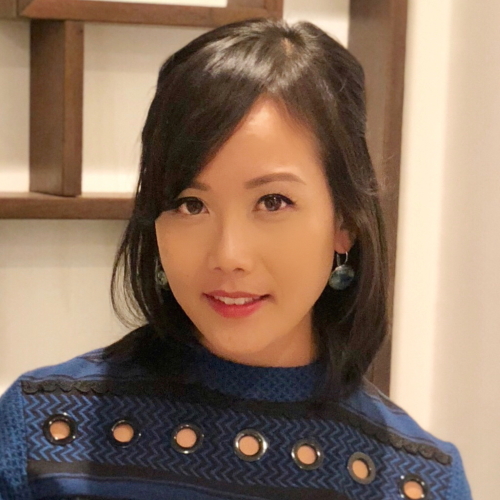
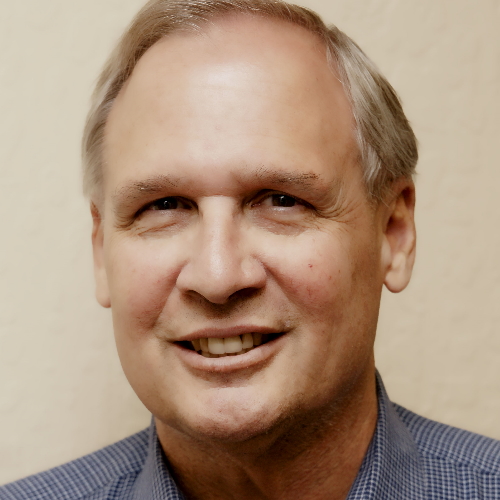
Jack Aiello: I was diagnosed with stage 3 multiple myeloma in early 1995, 28 years ago. At the time, I had been married for 20 years and had young kids — 16, 14, and 10 years old. I remember when the doctor told me that at my stage I was probably going to live for only two to three years, that was pretty scary. I didn’t know what to say to my wife. We shared a good cry and I remember talking to my kids and saying I had something wrong with my blood because I was going to be in the hospital for 96 hours. I tried to leave it at that. You try to protect your children as much as possible.
Ultimately, I ended up having a tandem autologous transplant — two autologous transplants about four months apart — but they only gave me a year and a half remission.
In late ’97, I started a clinical trial for thalidomide, which was really important to the world of myeloma because a third of the patients responded to that treatment. Unfortunately, I was refractory. I didn’t respond at all. My disease condition got worse as I was on it. I tried other chemos — they didn’t work.
I had one other available to me — in this case, [the] fourth line of treatment — called an allogeneic transplant, meaning that instead of using my own stem cells as was done in an autologous transplant, I used donor stem cells. It worked. It’s not done much today because even back then, there’s a 40 to 50% mortality rate just from the transplant. Today, we have so many other safer treatments that it doesn’t make sense to do. But it was the only option available to me back in ’98. And I haven’t been on any treatment now since the early 2000s.
Two things I did right. I found that we had a myeloma support group in the San Francisco Bay Area, where I live, and they helped educate me about myeloma and [the] questions I should be asking. The second thing I did that really made a difference was seek out expert opinions. Ultimately, I went to Little Rock, Arkansas, to go through most of these treatments. Back then and still today, Little Rock [is] a premiere center for treating myeloma patients so that made a huge difference for me.
Today, whenever I talk with myeloma patients, I always suggest that they get a second opinion from expert doctors and there are so many more available these days from around the world. I’m fortunate enough to be pretty knowledgeable about myeloma these days.
The top doctors and researchers from around the world meet [at ASH] to discuss the latest in blood cancers, specifically myeloma. Two of those doctors are joining our conversation today: myeloma specialists Dr. Josh Richter and Dr. Muhamed Baljević. Both are committed to seeing myeloma patients in their clinics and also furthering research to get us those next improvements in treatments.
We will be highlighting the summary of top takeaways in myeloma from the ASH conference for first-line therapy patients all the way through later relapse. The big buzz at ASH for myeloma patients was the word bispecifics. But before we go there, there was some update that could actually change treatment for some myeloma patients today. And it has to do with steroids.
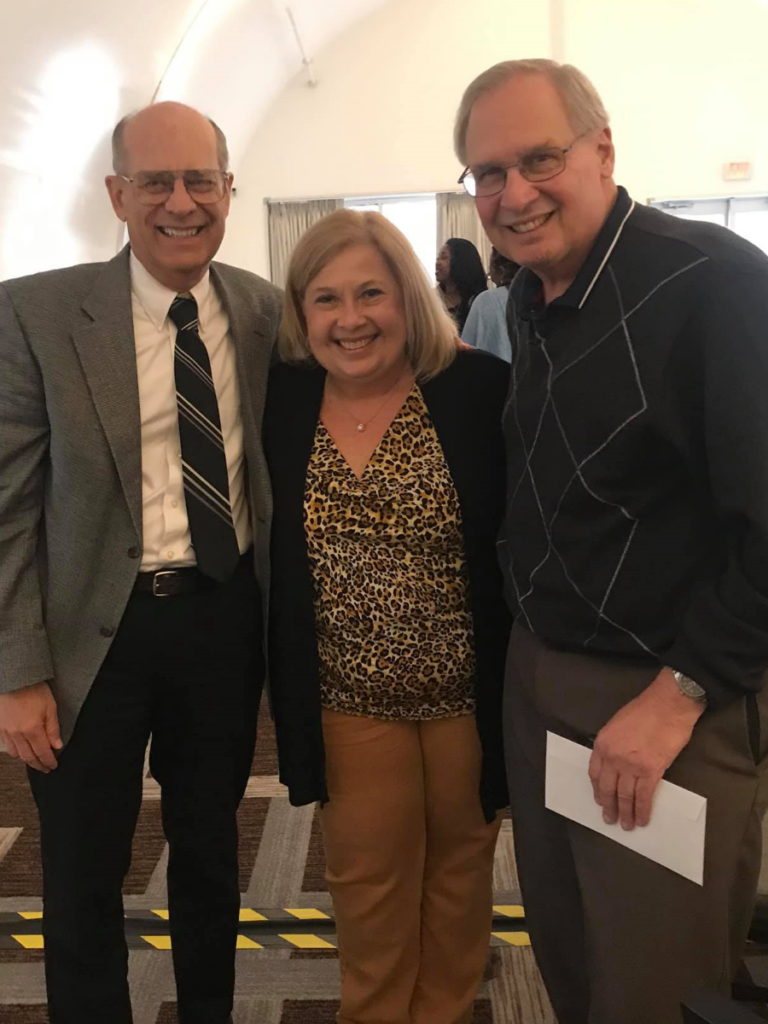
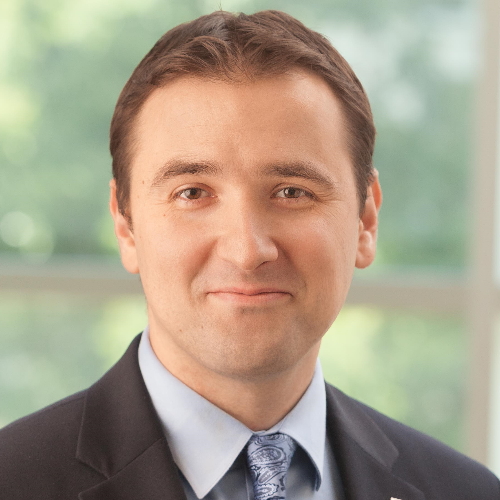
Cutting back on the use of dexamethasone
Dr. Muhamed Baljević: There was an important piece of data presented in frail, newly diagnosed patients where we demonstrated that it’s possible to cut back on dexamethasone completely. This is really important for patients. We’ve all received these questions.
Glucocorticoids are not easy to tolerate with [a] multitude of side effects. In these frail patient populations where patients have multiple comorbidities — some may have diabetes, brittle diabetes that’s insulin-dependent — it’s really a success that we are presenting data like this, that we can show that it’s safe and feasible.
Quite frankly, even in my own clinic, I and many others are trying to see if we can pull back on the use of glucocorticoids long-term. Perhaps, in the beginning, there’s some bigger role but later on, would be lower.
What are bispecific antibodies?
Jack: Let’s go now into the big area of buzz — bispecific antibodies. Dr. Richter, can you help us understand what bispecifics are? We actually know about monoclonal antibodies like daratumumab. But what’s a bispecific antibody?
Dr. Josh Richter: People may be familiar with monoclonal antibodies like Rituxan or Darzalex. It’s got one arm, grabs onto the cancer cell, and kills it. Bispecifics have two arms and classically, right now, each of those arms does this one thing: one arm grabs onto our T-cells and activates them to attack the cancer [and] the other grabs onto the cancer cell. This arm that attaches to the T-cell attaches to something called CD3. It’s on all T-cells. That, for the most part right now, is the same. But the arm that grabs onto the cancer cell is different.
At ASH, we’re seeing presentations from four different other arms. BCMA, some people may have heard of. It’s the target of many CAR T therapies and a drug called Blenrep. Talquetamab targets something called GPRC5D. There’s another drug called cevostamab that targets FcRH5. There’s another drug that targets CD38, the same marker that’s attacked for Darzalex, but also using the T-cells, and that drug goes by the name ISB 1342.
Really excited about talquetamab because right now, the majority of our T-cell redirecting therapies [have] all been BCMA. We have two FDA-approved CAR T-cells. They both attack BCMA. We have one FDA-approved bispecific. It attacks BCMA. We had an antibody-drug conjugate called Blenrep. It was taken off the market, but there are two ongoing phase 3 studies — the DREAMM-7 and DREAMM-8 study — which will hopefully bring the drug back within the next year, year and a half. Fingers crossed.
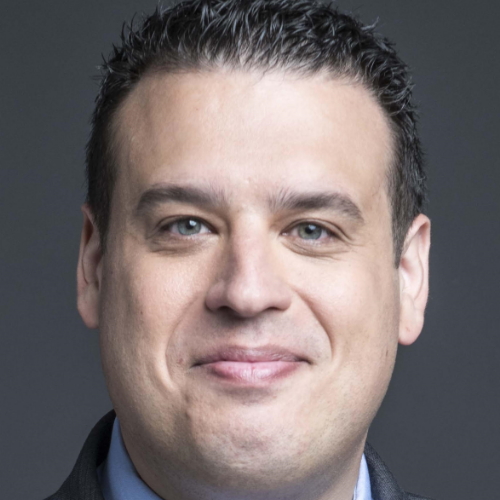
Dr. Baljević: I personally think it’s a good drug and it’s an important drug for some subsets of patients. We learned that we will still be able to give that [to patients] on compassionate access. I think that’s important because not all patients will be eligible for CAR Ts and maybe even for bispecifics.
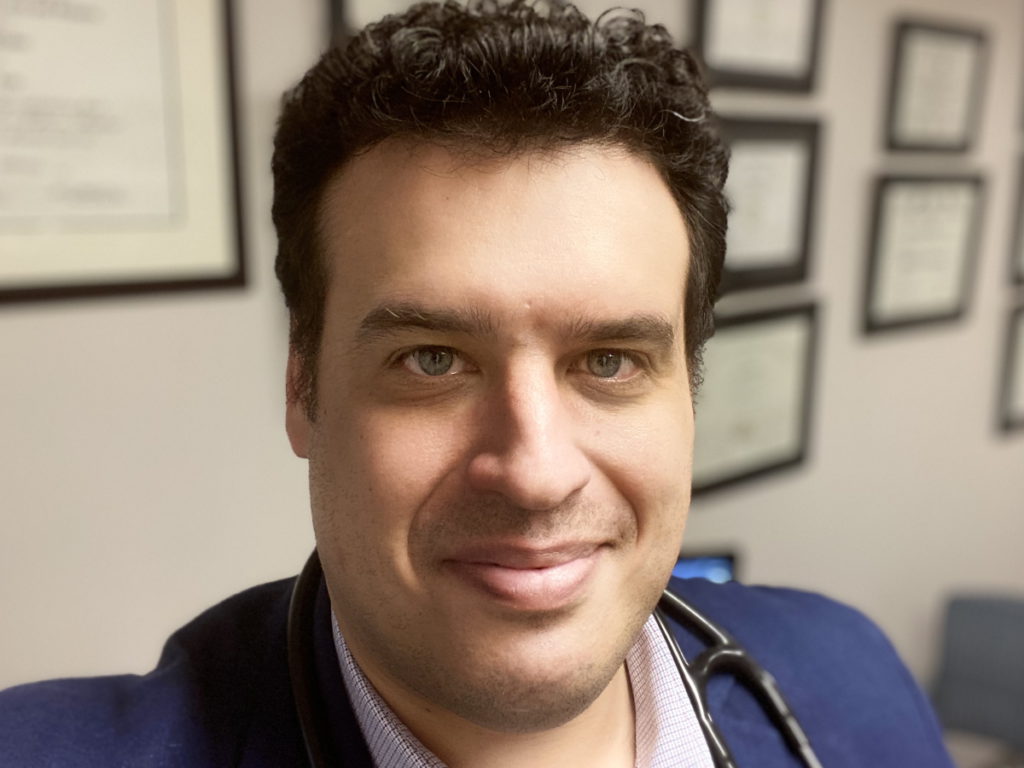
How soon will patients be able to start on bispecifics?
Jack: Let’s talk [about] real-world access for patients and caregivers. With all of the bispecifics, how soon are we talking?
Dr. Richter: Teclistamab was approved. We have started giving the drug. Commercially, it’s available. As opposed to a CAR T where there [are] limited slots because of production, this drug is available. But let me put a little caveat on that.
Right now, the way the drug is recommended to be given by the FDA is that you get several step-up dosings and this is done mostly inpatient. You have to be admitted to the hospital for about seven to 10 days. We can’t admit 30 patients at a time. Every institution is developing [its] own SOP of how many patients they feel comfortable with [in] a week. Right now, we have a list of patients that have been waiting and now that we’re giving the drug, we’re going through that list pretty [quickly]. My guess is that within the next couple of months, we will have gotten through that list and we’ll be able to say, “Okay, you’re progressing. You need the drug. You can get it.” It’s going to happen a lot faster than for CAR Ts.
When will bispecifics be available in Community Cancer Centers?
Jack: How about true availability? For instance, CAR T has been limited to certain sites, mostly bigger and academic hospitals. Will bispecifics be available for those of us getting care in the community?
Dr. Richter: That’s a really, really great point. The short answer is yes. Yes, it is, but it’s not going to be given in the community just yet. There [are] still pretty high rates of CRS. It involves admission. It involves some of the management strategies that a lot of these doctors are not as familiar with.
A lot of hematologist-oncologists out there are used to dealing with [the] side effects of classical chemo. Then they got used to dealing with the side effects of checkpoint inhibitors. It’s going to be a learning curve.
We’re willing to partner with the community. You come to us, you get that first inpatient dosing, get you through the risky part, and then get you back to your community to get your regular treatment.
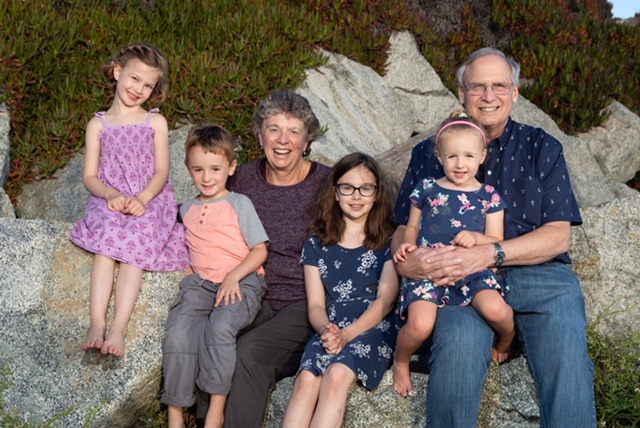
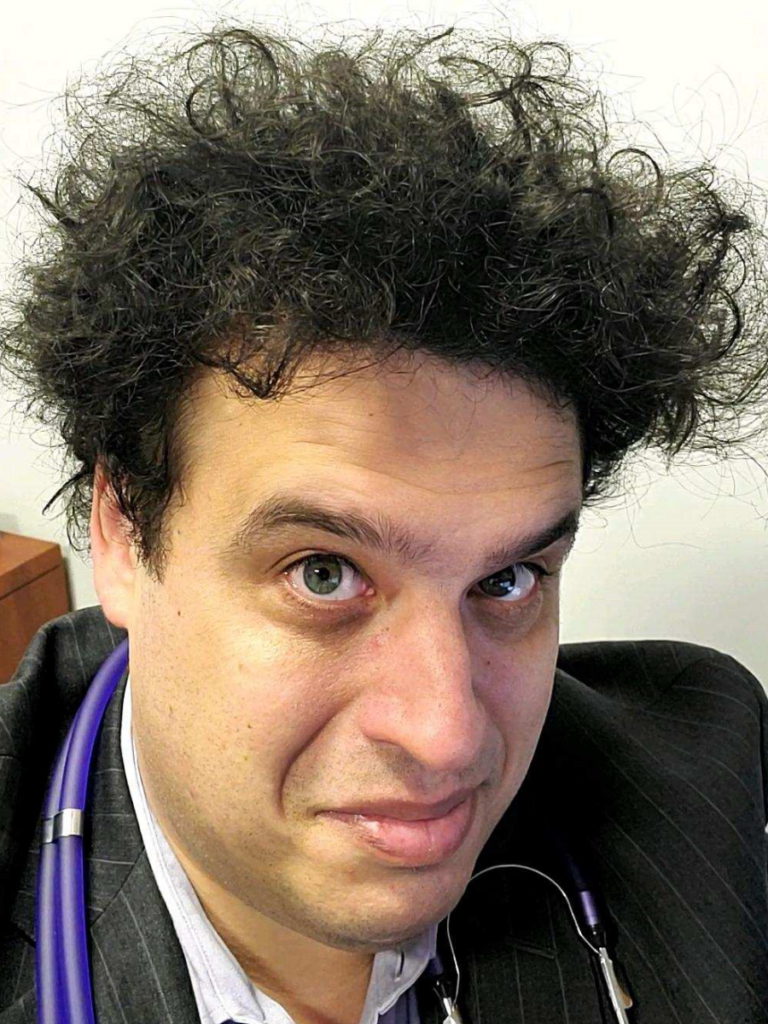
What is cytokine release syndrome?
Jack: We hear a lot about CRS — cytokine release syndrome — as a side effect, especially when it comes to these T-cell therapies. Dr. Richter, can you share what it looks like in patients from low to high grade when they experience CRS and how it’s managed?
Dr. Richter: There’s a grading system. What does it mean? There is something called the CTCAE, the common terminology [criteria for] adverse events, and it grades everything from a grade 0 to a grade 5 — from stubbing your toe to a heart attack to CRS. Grade 0 is you don’t have it, 5 is you’ve died from it, and 1 through 4 is gradual worsening.
In clinical trials, we often look at grade 1, 2 as being the milder ones and 3, 4, the more serious ones. In general, grade 1 CRS is just some fever. You spike a little temperature. You feel fine. Your other vital signs are fine. You’re not having any trouble breathing [or] anything like that. For grade 1, you don’t really need to do anything. If it persists, you can start adding drugs like tocilizumab. For early grade 1, you could just give Tylenol if you want. Simple things like a little IV fluid [and] a little Tylenol will settle them down.
Grade 2 is where your pulse is getting a little faster or your blood pressure is starting to drop. If your O2 sats starts dropping, that’s starting to get into grade 2, that’s where we’re really coming at there with things like tocilizumab.
Then as we get to 3 and 4, that’s where oxygen is getting worse. You may even need more oxygen support, even getting to the point of being on a ventilator. Not very common.
Will bispecifics be given in the outpatient setting?
Jack: With that in mind, will bispecifics be able to be given in the outpatient setting?
Dr. Richter: There are already a number of people starting to give these completely outpatient. There are certain risk factors for higher-grade CRS. If you have a very high tumor burden, we know you’re more likely. If certain markers like your LDH are already cranked up or circulating plasma cells, we know you’re more likely to have it. If we have someone that doesn’t have all those risk factors, we could give it as an outpatient.
But there’s actually some data from another bispecific being presented at ASH that is going to make it more applicable to the outpatient.
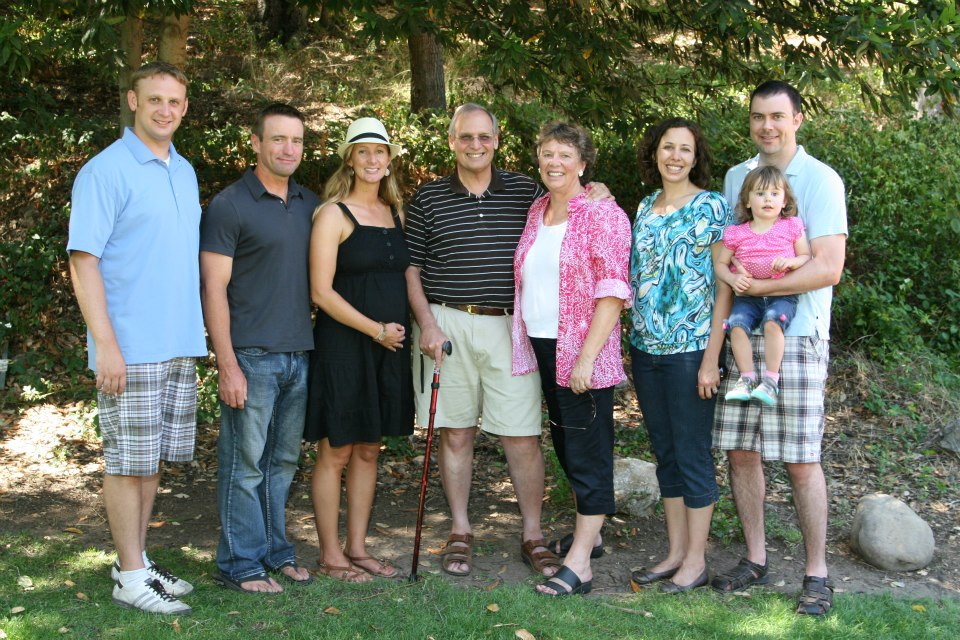
Thoughts about patients needing hospitalization with bispecifics
Jack: For teclistamab, there is the initial two-step dose, then the third full-strength dose, all given at least 48 hours apart. Patients are then required to be in the hospital to manage possible side effects for at least a week. What are your thoughts about the requirement for patients to be hospitalized with bispecifics for the time being and the burden associated with that?
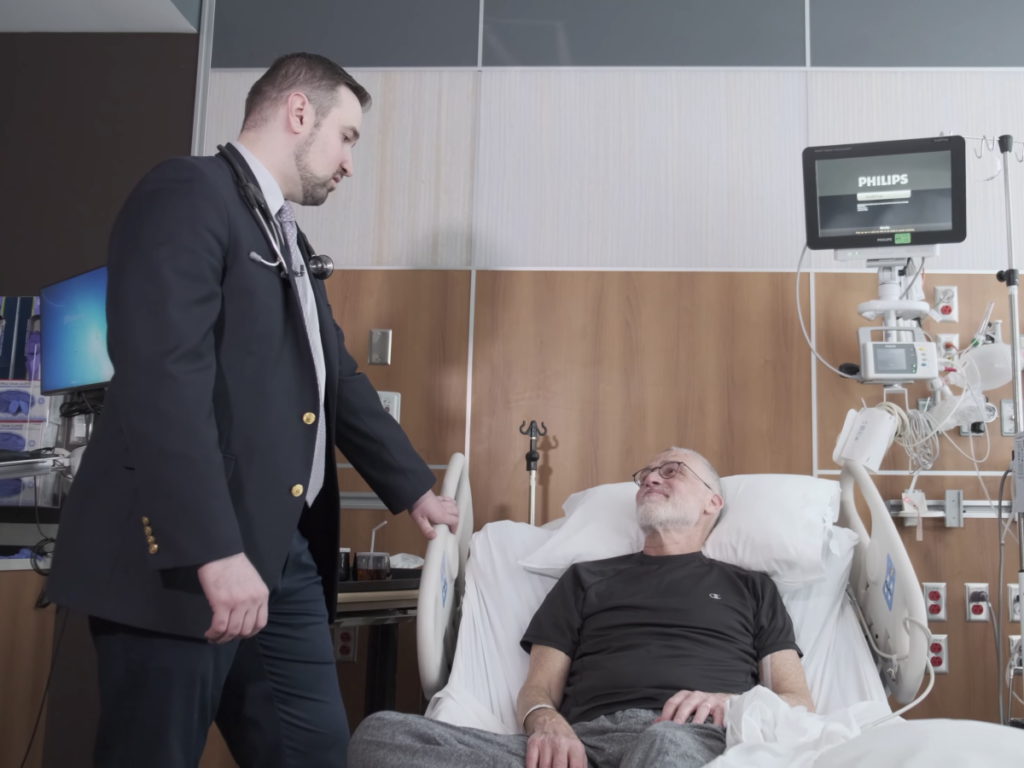
Dr. Baljević: This is really important because it’s really essential that we use this drug safely. The label is advising that inpatient admission and monitoring be considered for each of the doses in this step-up schedule, which is basically one, four, and seven — seven being the first full dose that they would continue with. Potentially, that does imply that people would need to spend nine days in the hospital.
There are a number of efforts that are going to be attempted to see what we can do. Can we consider doing some of this therapy in the outpatient setting, partially or maybe even fully? There’s also [the] possibility of having [a] slightly different step-up schedule of one, three, five with [a] seven-day admission rather than nine. Cutting back a little bit on the days spent [inpatient] has an impact on how hospital systems can deal with the costs associated with therapies and reimbursements for these therapies.
Really important period ahead for how this drug is going to be used in the broader sense in academia but also in [the] community importantly.
Dr. Richter: Cevostamab is another one of those bispecifics — CD3 to grab onto the T cells, something called FcRH5 that’s on all the myeloma cells. There [are] two presentations at ASH that I think in and of themselves wrap into a nutshell how we are likely to approach all bispecifics in the future. If you put them together, this is the blueprint.
We’re talking about CRS. We recognize that some people [are] going to end up in the hospital, have high grade, or get sicker. When you develop CRS, we give a drug like tociluzimab. What happens if you use it as a pre-medication? What happens if you give it before you even give the first dose? Can you mitigate or prevent CRS? And that’s exactly what they did for cevostamab. They took patients and they gave them a prophylactic dose of tocilizumab and it took the overall all-grade CRS rates from over 90% down to the 30th percentile. And that’s just the beginning.
People will just say, “Well, wait a minute. If we give toci, are we going to affect the efficacy?” For cevostamab? Absolutely not. We have not affected efficacy, but we’ve markedly reduced the incidence of CRS.
We’re all starting to talk about how we’re going to approach this. Should we consider giving people tocilizumab before we give them bispecifics, particularly for the people we worry may not tolerate it? 40-year-old, no medical problems? Not as worried. 80-year-old, [with] multiple comorbidities, may not be able to tolerate that grade 2 to 3? Consider giving them tocilizumab.
Dr. Baljević: I think that’s really interesting because we may yet use the findings of that cevostamab study to try to plan how we can reduce the incidence of CRS in other bispecifics and maybe even in the CAR Ts. A lot of interesting data [was] presented.
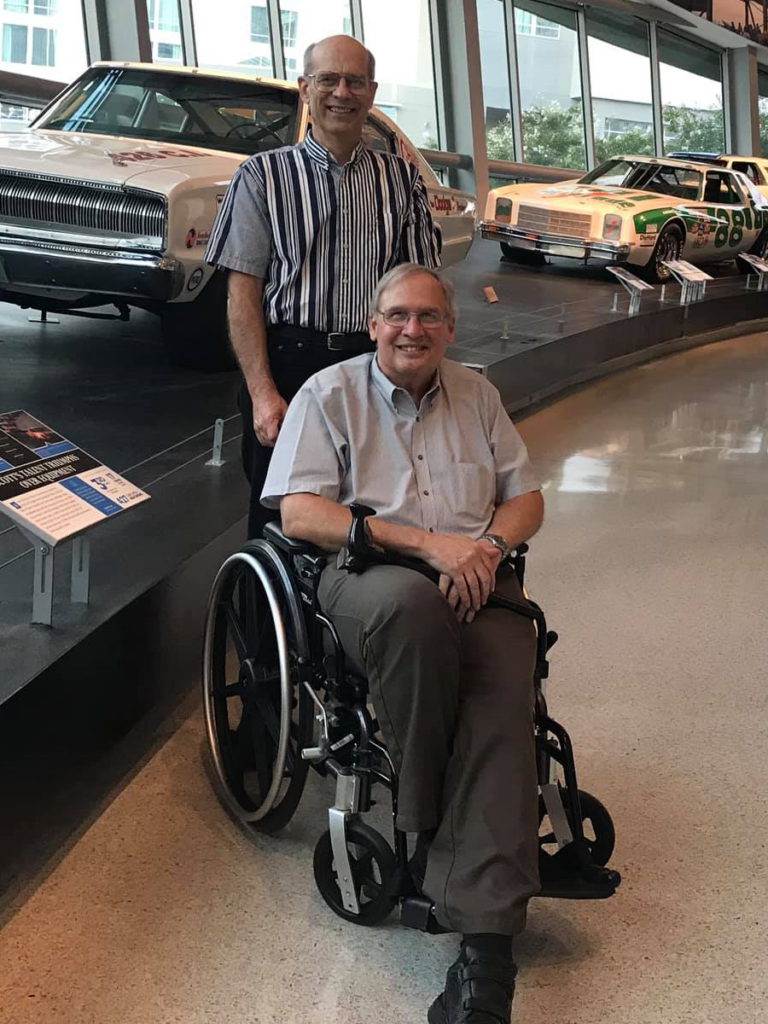
Limited duration treatment with bispecifics for relapsed/refractory myeloma patients
Jack: There is also research pushing towards the possibility of limited duration treatment with bispecifics for relapsed/refractory patients, meaning not having to continuously be on treatment. Can you share more about this?
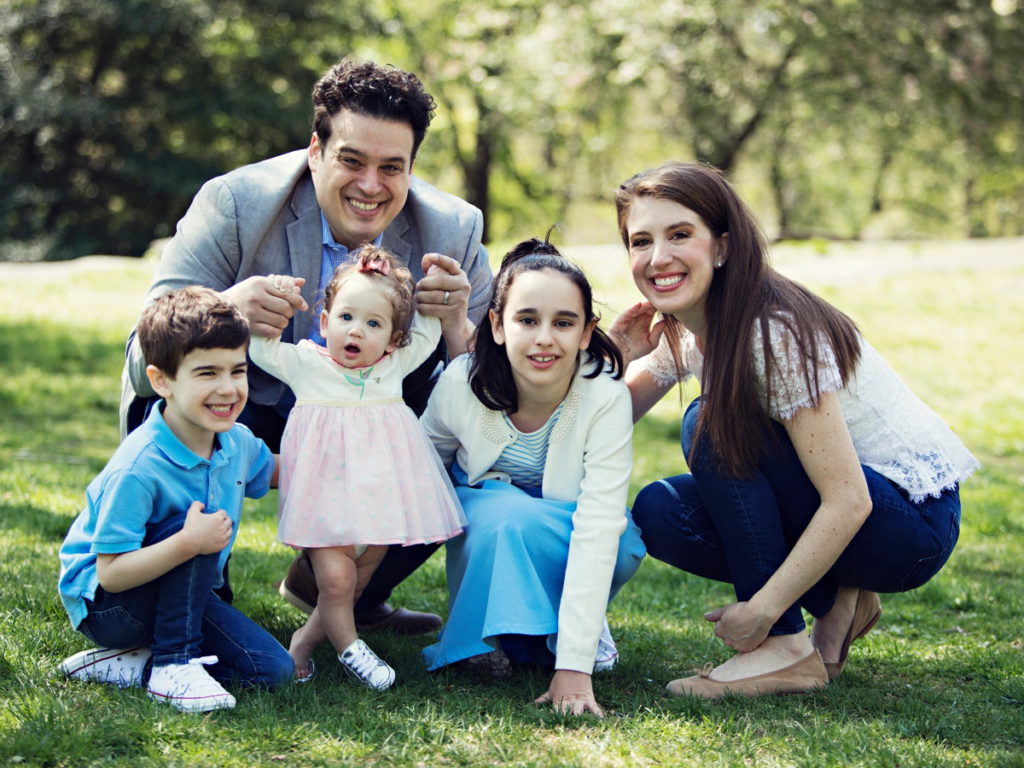
Dr. Richter: The whole standpoint is [to] treat until progression or intolerability. We don’t stop therapy. It’s true for all the bispecifics, except cevostamab. This is fixed duration — 17 cycles, which rounds out the drugs every three weeks so it’s step-up dosing. It’s one year of therapy and then you stop.
We’re starting to see patients who’ve completed that and we’re monitoring them off therapy. In that trial, they have the option of being re-treated if they progress while they’re off [treatment]. We have patients greater than six months and we have a number of patients greater than 12 months. Patients completed a year of therapy and are now another year in complete remission, off of everything, and living their lives. If at some point the disease comes back, we come right back in with a drug that put them back into remission.
This gives us a number of advantages. Number one is obviously how patients feel. But there [are] two other big ones. One is something called T-cell exhaustion. If you give these drugs that activate the T-cells and you say, “Fight, fight, fight,” eventually they get tired. Maybe they’re getting tired [to the] point where you don’t need them and when you do need them, they’re not ready to go. Giving someone a break off the drug, those T-cells can recuperate and when you need them, they’re back ready to fight.
Dr. Baljević: [A] deeper understanding of T-cell function, T-cell exhaustion, and resistant mechanisms is needed and that’s where some of these other agents that have [a] positive impact in those situations can lend themselves even more useful. For example, selinexor is such an agent where some of the preclinical data has already been published and demonstrated maybe some of these roles.
Jack: Is the hope that other bispecific can also test this finite duration?
Dr. Richter: Absolutely. That is the big buzz when you talk with all of the pharma companies [at ASH]. Because why did cevostamab choose a year? We even asked them and they couldn’t give an answer, but I’ll give the answer. One year is a nice round number. It’s not a biological thing. It’s a nice round number. But what this is becoming thought-provoking for all the other bispecific manufacturers is to say, “We need to do this, but with a biological endpoint.”
For example, complete remission and then two more cycles and then stop or MRD negative and three more cycles. But right now, the big discussion is to not just pick a random number but to have a biological response. Right now, these are the big discussions in the halls of ASH: how do we design the next series of trials?
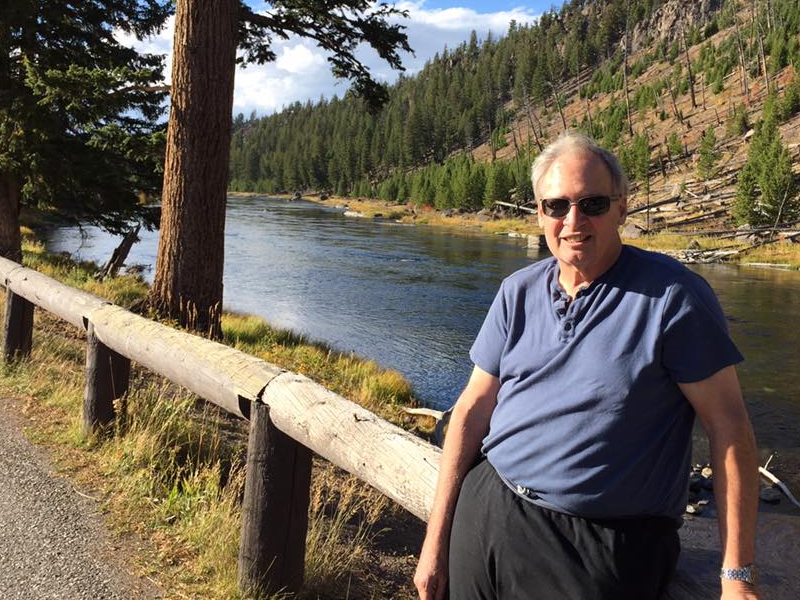
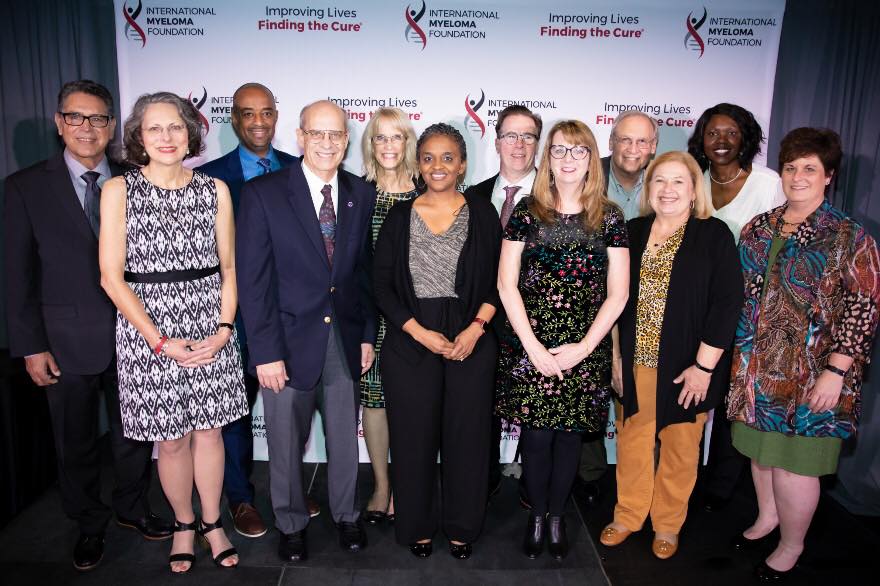
Who would qualify for bispecifics?
Jack: Remind us: who would qualify for bispecifics?
Dr. Richter: You can say patients who’ve had four or more prior lines. Another thing we talk about is triple-class refractory so refractory to a drug like Revlimid, a drug like Velcade, and a drug like daratumumab. Now we’re even going [to] the next step: also refractory to a drug like a BCMA drug.
What we know is once that gets those approvals towards the end, we start learning more. We move it further up. New combinations. There [are] already trials in bispecifics in one to three prior lines and a few that are on the verge of opening as upfront therapy. Very new, not a lot of people on them. We’re still trying to figure that all out.
Dara had a response rate of 30% in the end and when you give it upfront, in combination, it’s 100%. What happens when you take a drug that [has a] 70, 80% response rate in someone who’s had an average of six prior lines? If you move it upfront, do you cure some people? Do you get remissions that are so long [that] it’s a functional cure?
That’s why the myeloma world couldn’t be more excited right now. There is a combination out there and there are actually several discussions right now of cure protocols and cure goals.
What is the overall takeaway from CAR T-cell therapy?
Jack: Dr. Richter, what’s the overall takeaway so far on the CAR T-cell therapy front?
Dr. Richter: The CAR T front is that they work well in the later lines. If you move those further up, initially we were worried about more side effects because it’s all about the T-cells again. As you go through your therapy, those T-cells get tired. And when you give a CAR T or collect T-cells in someone who’s had a whole bunch of therapy, you’re collecting tired T-cells.
What we were worried about is if we collect early on T-cells that are more robust, maybe they’re going to give you more side effects, more CRS, [and] more neurotoxicity. That is not happening. That’s not the case. So we know that we can give these drugs early on, but some of the early data has been extremely encouraging.
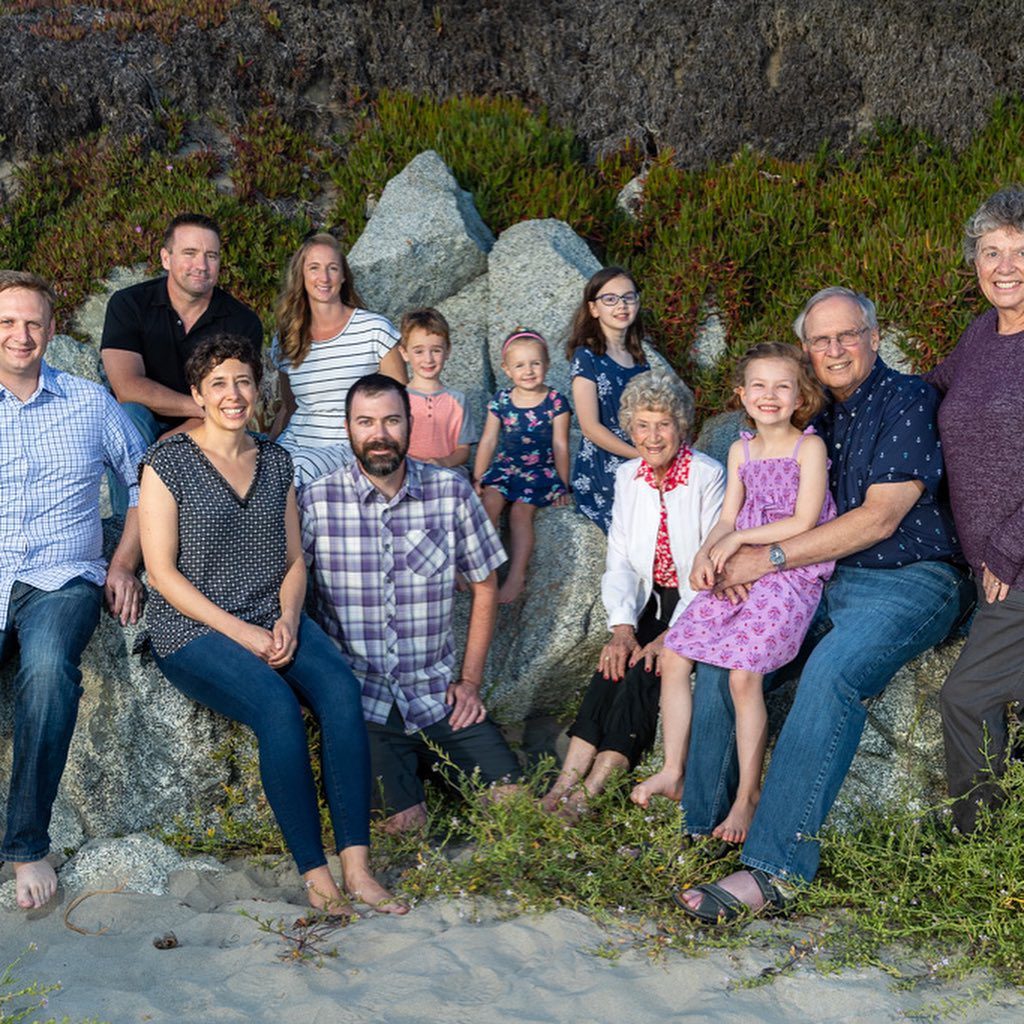
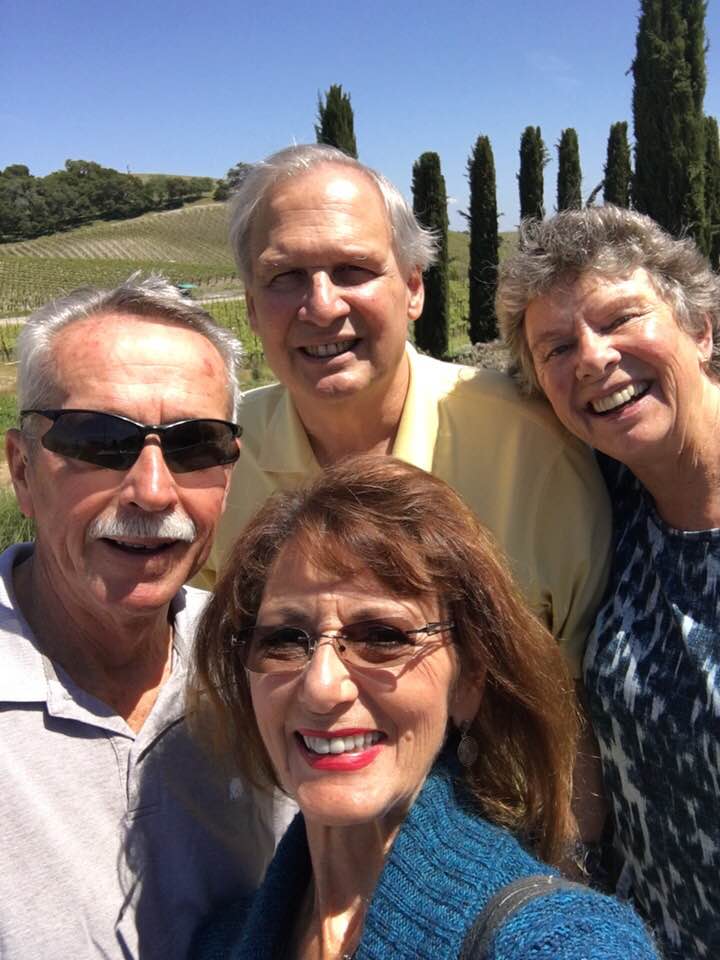
The big question is: is it better than other therapies early on? Now, there’s a study called the KarMMa-3 study, which compared ide-cel versus an early regimen in relapse like dara-pom-dex. We don’t have the data just yet, but there was a press release to say that CAR T beat it. A lot of excitement about moving CAR Ts into early relapse.
Then there [are] two strategies right now about CAR Ts upfront. One strategy is comparing CAR T versus transplant and that’s a really interesting one but that’s not my favorite. My favorite is transplant followed by a CAR T with the idea of your induction [bringing] you down, your transplant [bringing] you down [further], and then immune therapy to sweep up what’s left. I’m hopeful that that might be a curative approach for some people.
How do you choose CAR T or bispecifics and in what order?
Jack: You were talking about how sequencing is going to matter but also in choosing which direction to go. For your patients, how are you going to decide or determine whether it’s going to be CAR T first and then you go to bispecifics or the other way around?
Dr. Baljević: That’s really important. We’re still learning how to recognize what the best patients are.
Personally, if I have a patient that can receive CAR T therapy and I’m in a position to give them CAR T therapy, preferentially, I probably will do that. Though we now have a first agent that’s bispecific and off the shelf by definition. We are expecting another number of agents in 2023, maybe Q2 — maybe one targeting BCMA or another one targeting GPRC5D for the first time. I think that both are associated with some of the serious side effects.
Autologous CAR Ts are associated with some requirements for generation and synthesis. Patients that are relapsing and have diseases with velocities that are pretty aggressive and whose proteins are rising rapidly, whose counts may be changing, or whose kidney functions, mineral levels, and calcium levels might be threatened, may not be the best candidates for those types of therapies. They’re better candidates for off-the-shelf therapy. That doesn’t only include BiTEs, but it may also include allo-based CAR T cells off the shelf.
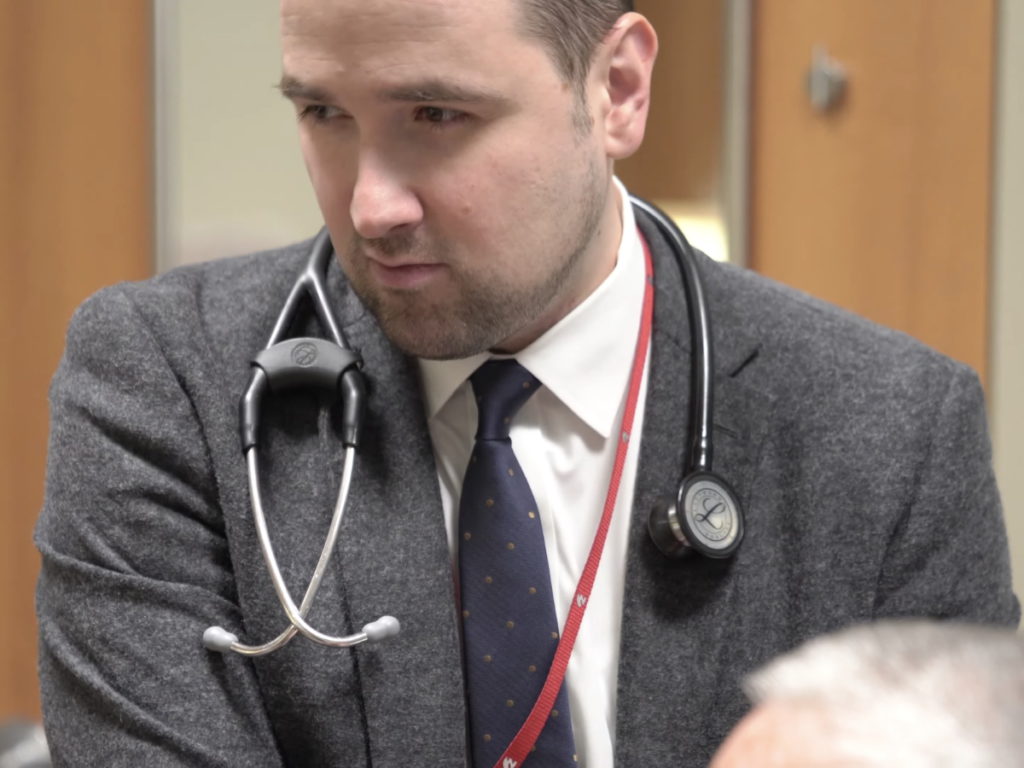
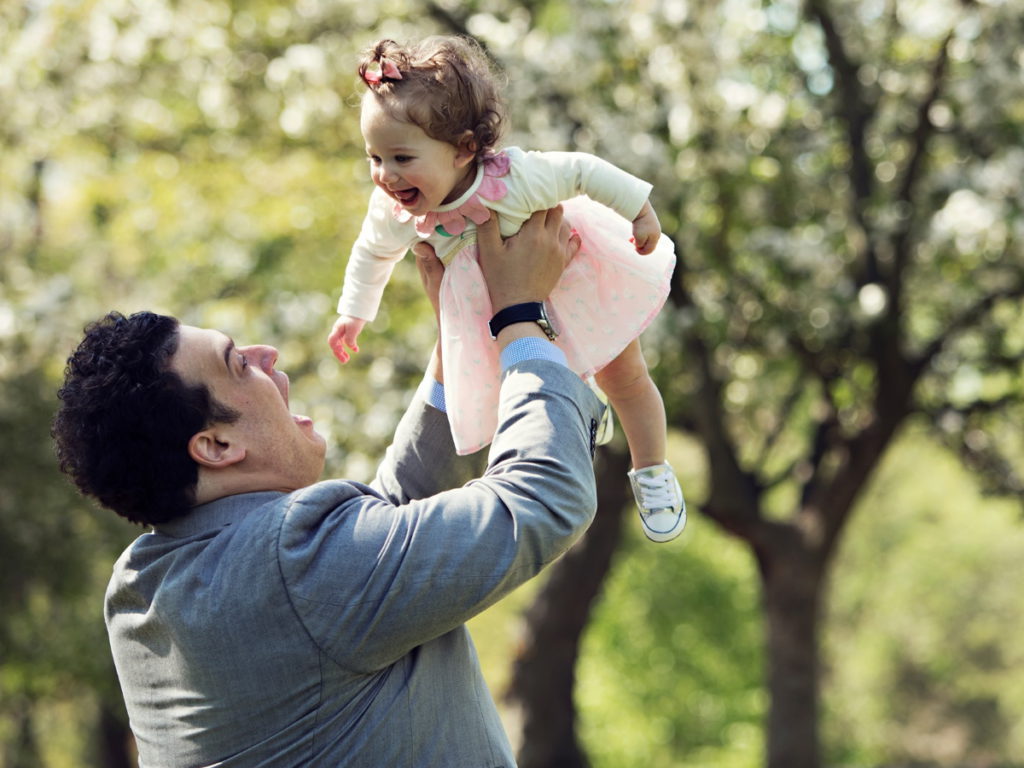
Dr. Richter: It’s all in context. If you look at some of the drugs like dara [with a] 30% response rate at six months or so in heavily refractory, we use it upfront.
The MAIA regimen — dara-rev-dex — for elderly, transplant-ineligible patients, the average remission upfront is greater than five years. What does that look like with CAR T? We’re still trying to figure that out.
Let’s say the two are equivalent. Giving someone standard therapy or CAR T, there [are] risks and benefits. CAR T, you have to be admitted; standard therapy, you don’t. CAR T is a one-and-done; standard therapy, you have to continue on. CAR T is usually something that we reserve for the younger and fitter. If you’re older [or] frailer, the other direction may be the way to go. But the other question is until CAR T is a one-and-done cure, we’re trying to improve remissions. There [are] a number of studies looking into maintenance after CAR T.
Updates on CELMoDs
Jack: Were there any updates on CELMoDs?
Dr. Richter: These drugs, just like Revlimid, worked in people who had thalidomide and pomalidomide worked in people who had Revlimid. These drugs work really, really well in people who’ve had the others.
Iberdomide, for example, is one of the most potent ones and it has a lot less in terms of what we call myelotoxicity — it doesn’t lower your blood counts as much. If you wanted to strategize an optimal maintenance drug, it’d be a drug that someone’s going to tolerate very well and not lower their blood counts, especially after something like a CAR T where your counts may be lower.
These CELMoDs are really going to be a big part of our therapy. We probably have to wait till 2025 [or] 2026 for regimens like Velcade-iber-dex and dara-iber-dex. But some push to consider those drugs in earlier lines. There [are] a number of great drugs on the horizon.

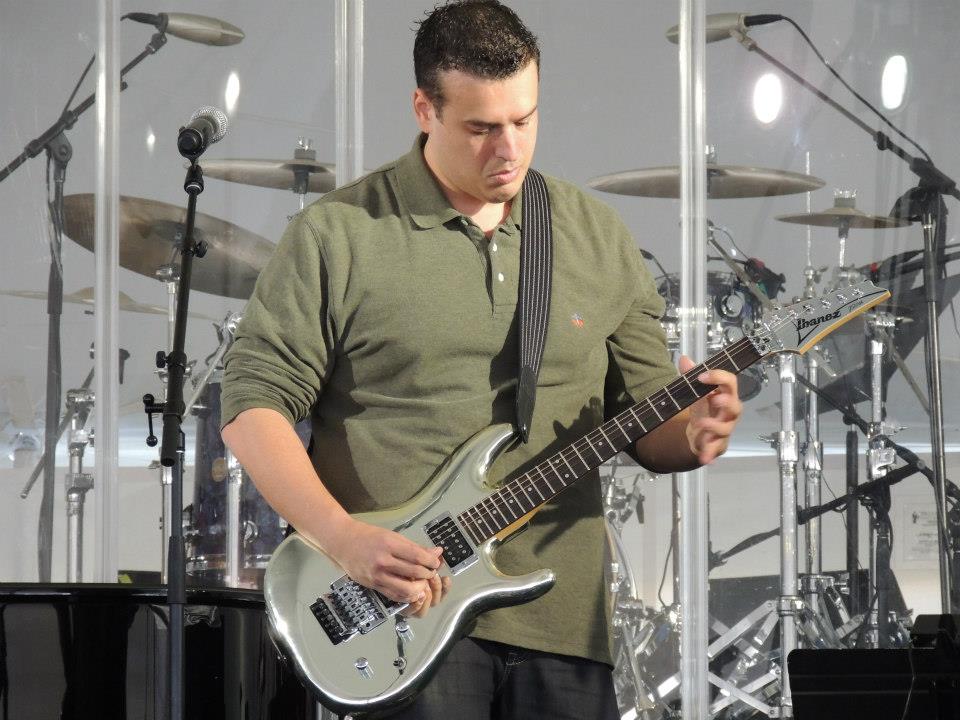
What role do ‘novel therapies’ play?
Jack: What role do the more recent novel therapies play now?
Dr. Richter: Right now, if you look at CAR Ts and bispecifics, it’s patients who had at least four lines of prior therapy. If we’re giving dara-RVd upfront and you’re getting car-pom-dex in your second line, you’ve got a gap in there. Now, that gap is very important because if you’re going to collect T-cells, if you’re going to collect CAR T, you can’t give a drug that kills T-cells.
For example, bendamustine is a drug that a lot of people had been using in that line. Bendamustine is a great lymphoma drug. It kills lymphocytes. So if you give benda and then you try to collect CAR Ts, you will fail. Selinexor is an excellent drug so we’ve been using a lot of it there to help bridge the people to get them to CAR T.
Understanding what dose is best for selinexor
Jack: Dr. Baljević, speaking of selinexor, you presented additional details on using this drug weekly instead of twice a week, providing efficacy with fewer side effects. Both the STOMP and BOSTON trials used this lower selinexor dosage in combination with carfilzomib and Velcade respectively. Can you expand on this topic?
Dr. Baljević: We are shown the value of selinexor as an agent in this difficult-to-treat population. Earlier, we were talking about the outcomes of high-risk patients. Anybody who is triple-class refractory, even if they’re not harboring high-risk cytogenetic features, they are, biologically, already in a place where they have progressed on multiple good therapies. We know from previous large-scale analyses that these patients have short, medium progression-free survivals and survivals that are measured in single-digit outcome endpoints.
What we did is looked at the patients that were exposed — and some of which were actually refractory to CD38-based therapy as well — and we looked at what type of outcomes they can have with selinexor-based, importantly, weekly treatments. A lot of investigators still have angst using selinexor twice a week. I agree with that. I have never given anybody selinexor 80 mg twice a week. These are active triplets with Kyprolis and dex, with Pomalyst and dex, [and] even with Velcade and dex so BOSTON data phase III was [a] positive report. But particularly with the second-generation PIs (proteasome inhibitors), and IMiDs, Pom, and Kyprolis, these are powerful triplets that are effective in this difficult-to-treat population.
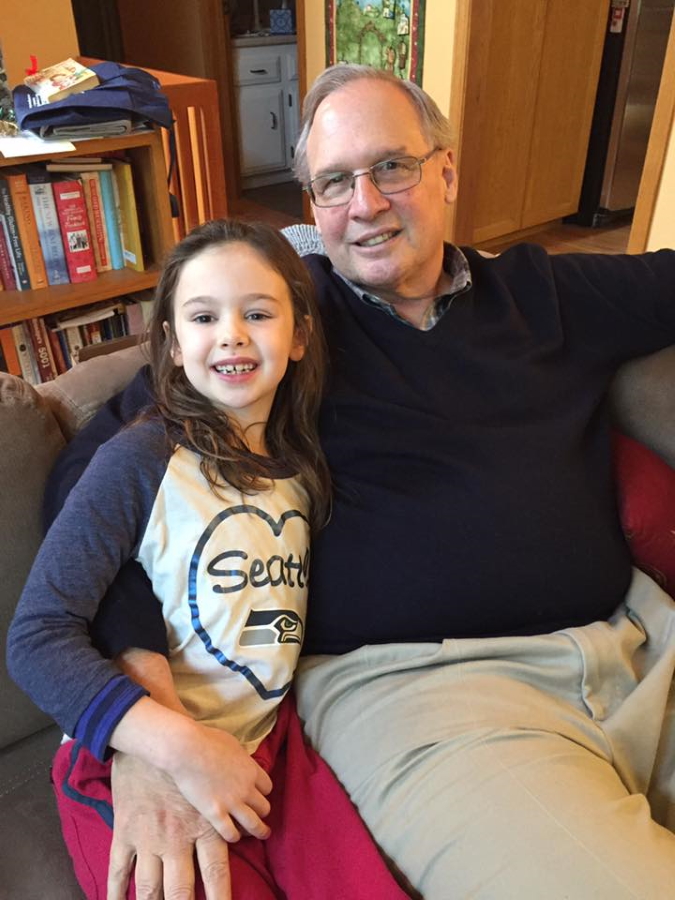

It’s going to be really important for us to try to understand: what is the best way for us to try to utilize agents with [a] different mechanism of action? How are we going to treat patients who are triple-class refractory and BCMA refractory potentially? A lot of these agents are being brought in early.
KarMMa-4 [and] CARTITUDE-5 are exploring the use of CAR T as a part of the first line. CARTITUDE-4 is going to be looking at cilta-cel versus two different standard of care options: PVd versus DPd. Some patients will potentially be treated in the second line with powerful agents. So what do you do with those patients? Well, we don’t know. We’re just generating that experience. We need agents with [a] different mechanism of action, that we can rely on that can actually treat this difficult-to-treat patient population.
How do we include more diverse populations in clinical trials?
Jack: Wonderful. We are seeing diversity, equity, and inclusion more and more, addressing the need to make sure that we are more inclusive of different populations. What can pharma, doctors, and patients do to increase diverse populations in clinical trials?
Dr. Baljević: This is such an important question. We are not doing such a good job in [the] myeloma field as myeloma specialists accruing minorities and disparities. We have data on that.
For example, [the] African-American population is still being accrued in the single digits on clinical trials so that’s a problem. And some of the other disparity populations as well. Where I practice and where I am in charge of the program, that’s really a programmatic goal for us to try to do better and increase disparity accruals on clinical trials.
In fact, we have a grant with LLS. [The Leukemia & Lymphoma Society®] is really an amazing partner in so many areas and they’re supporting [the] increase of awareness and access of patients from the community areas, especially those that are underserved geographically. We are partnering successfully with colleagues in the community, trying to bring patients, and increase access to good quality clinical trials for hematologic malignancies in general, including myeloma.
We need to do a better job. That really needs to be a goal of every single myeloma physician. Hopefully, in the future, we’re going to see more trials that have more balanced accruals in terms of different ethnicities [and] different disparity populations in particular.
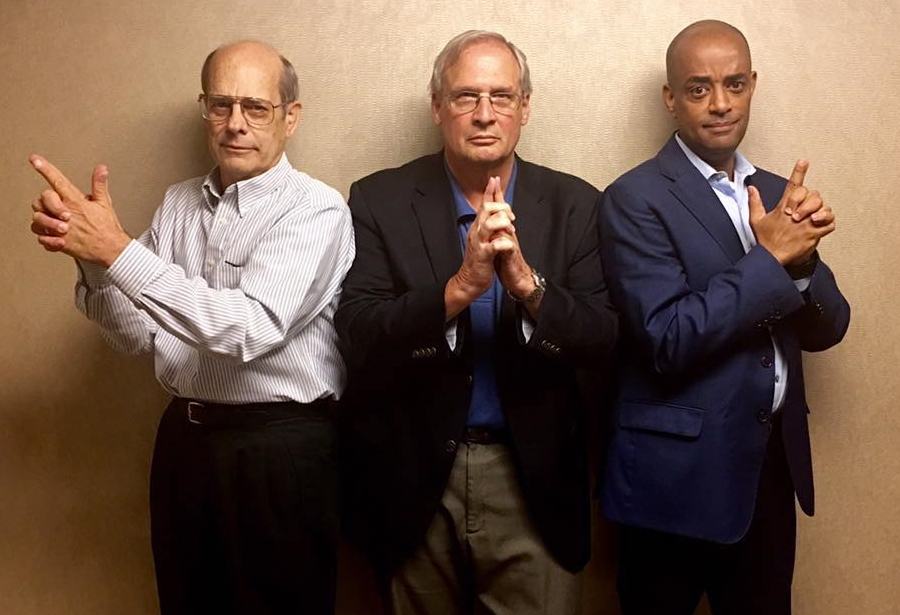
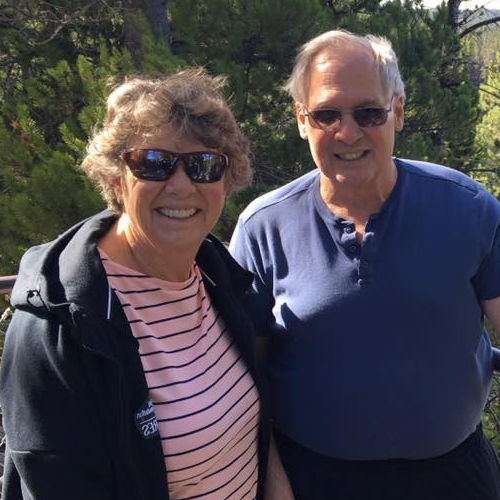
Dr. Richter: When I started this and people were diagnosed, I said, “We can’t cure this disease. I’m very sorry.” Today, we cure some people. [It’s a] small number and I will admit it’s by accident. We don’t know that we did something extra special for that particular person. The next generation is intentionally curing more with the goal of intentionally curing everyone and we have the pieces to start getting closer and closer to that.
Conclusion
Jack: Thank you to Drs. Richter and Baljević for joining this discussion about the latest in myeloma treatment as we head into the new year. There was an incredible amount of myeloma information at the recent ASH meeting and you’ve helped distill it down for patients to be able to understand. Patients, thank you because all of this information comes your way and is important for your own education and enabling you to be your own best patient advocate.
Stephanie: Thank you, Jack, for leading this discussion. Thanks again to Drs. Richter and Baljević for such a rich discussion. There’s just so much to know about in the space of myeloma. Thank you again for joining us.
Follow-up questions
January 2023
We asked Dr. Richter to help answer some of the pre- and post-event questions submitted. Unfortunately, we could not address them all, especially if they were too individualized, as our specialist cannot provide you with personalized medical advice.
This is not meant to be medical advice or replace information from your own medical team. Please consult with your doctor and medical professionals before making treatment decisions.
General
Based on the ASH conference, are any changes to the NCCN guidelines in myeloma therapy likely to occur? Any new information with regards to treatment for patients with multiple myeloma with plasmacytomas?
The NCCN meets regularly to discuss and implement changes. Changes can occur from new manuscripts, trials, conferences, etc. as it’s an amalgam of all of this. I’m not sure that there are any changes planned at the moment.
Plasmacytomas can be thought of in two ways.: solitary plasmacytomas and plasmacytomas associated with myeloma. In the first one, radiation offers the potential for cure. In the second one, you can use chemotherapy and/or radiation to control them. Nothing really new about them from ASH.
Treatment response
What treatments will have the best outcomes for high-risk patients, specifically del 17p?
We don’t really know this just yet.
Why do some patients not respond at all to the gold standard of Revlimid (lenalidomide), Velcade (bortezomib), and dexamethasone?
We often don’t know this as well. There is extensive work regarding the role of cereblon in patients who do or don’t respond to Revlimid.
What is the average length of time a drug regimen works before having to switch to a new one?
This is different for everyone and highly variable. That being said, it tends to be longer in earlier lines (i.e. The first line lasts longer than 2nd line than 3rd line, etc.).
If a patient doesn’t do well on chemo and is transplant-ineligible, what is gold standard for next steps?
There is no universal answer. We decide therapies based on three main factors:
- patient-related factors
- disease-related factors
- treatment-related factors
There is no “gold standard,” and there are oftentimes multiple options with different risks and benefits.
With all of the new developments, has the length of life increased? We were originally diagnosed 3 years ago and told the average lifespan is 7-10 years. Is it still accurate?
The length of life is certainly increasing. The most up-to-date data is listed on the SEER website.
However, as you will note, the data currently looks at 5-year survival rates for patients from 2012-2018 as it has not been 5 years since 2019. We really don’t know the rates of a patient diagnosed today. But they continue to improve. Unfortunately, those with high risk and more specifically ultra-high risk are not seeing the same degree of benefit.
Side effects
Multiple myeloma affected my kidneys to the extent that I had to begin dialysis. I had a stem cell transplant in 2018. Are there any new treatments to help with this reversal? I have the urge to urinate only.
Myeloma can affect the kidneys in a number of ways. Some are reversible, and some are far less reversible. In general, the longer one remains on dialysis, the harder it is to reverse the kidney damage.
How to overcome side effects from multiple myeloma chemotherapy? Weight, neuropathy/tingling feet, tiredness, or agitation.
Best to discuss this with your care team. There are a number of strategies, but they need to be individualized to you, your treatment, and your myeloma.
Had BMT, in remission, feeling great, but no libido. What did it? The cancer, chemo, radiation — all of it. Can’t use Viagra and mainly have no interest. I was not like this pre cancer.
Therapy can lower testosterone levels. Consider checking them in consultation with a urologist.
Transplant
My 35-year old husband was diagnosed in 8/2022 and will be undergoing an autologous cell transplant in January and an allogeneic stem cell transplant in March. Advice for recovering from transplants?
Eat well, sleep well, and exercise. Basic tenets of life will help before, during, and after transplant. The other strategies should be discussed with your care team and be individualized to you.
What are my treatment options if I can’t get another bone marrow transplant in a new relapse?
There is no universal answer. We decide therapies based on three main factors (patient-related factors, disease-related factors, treatment-related factors). There is no “gold standard,” and there are oftentimes multiple options with different risks and benefits.
CAR T
One side effect of CAR T-cell therapy is a depleted immune system and extremely low IgG. This seems much more serious than its current explanation. How serious is this?
CAR-T can lead to immune suppression in a number of ways. Many of them recover with time. IVIG is a good strategy to augment your immunoglobulins during this time.
Can the CAR T-cell therapy be repeated after, or is it a one-time treatment?
Patients can be treated with more than one CAR-T, albeit this is not a common occurrence.
What results have you seen with patients that have had a second CAR T that targets BCMA?
There is limited data looking at patients who receive a 2nd BCMA CAR T. The outcomes are extremely variable and depend on a lot of things, such as how long was it in between your CAR T’s and what is the nature of your relapse.
Bispecifics
Is teclistamab being administered out there in community hospitals and clinics yet? How is it doing?
So far the overwhelming majority of teclistamab is in academic centers as the FDA approval recommended inpatient admission to the hospital for the initial step-up dosing. It will take time to roll out in the community.
How many deaths “approximately” have there been caused by bispecific clinical trials and treatment?
There is unfortunately no way to answer this for a large number of reasons, apologies.
MRD
What would constitute MRD positive/negative in numbers, if possible? For example, M-spike = 0 for how long, abnormal plasma cell population percentage of WBC, and what else is relevant?
MRD evaluation is independent of M-spike because the M-spike measures a protein and the MRD test measures the actual cell. MRD can be assessed by a number of different methods, with the two leading methods being next-generation flow cytometry (NGF) and next-generation sequencing (NGS). The positive/negative parameters are set by the technology and the number of cells analyzed.
Second cancers
What are the prevalence and treatment considerations for patients with relapsed/refractory multiple myeloma (RRMM) that develop myelodysplastic syndromes (MDS)? Are there clinical trials in our area, and if so, how do you find out about them?
MDS is an uncommon but known entity in patients with RRMM. The treatment options are individualized for MDS, just as they are in myeloma. Options include therapies like the hypomethylating agents and even drugs like lenalidomide.
Trials for MDS in RRMM patients may be complicated as many trials exclude patients with other malignancies. Always best to discuss with your care team about the options. Clinicaltrials.gov lists all trials and oftentimes includes the inclusion and exclusion criteria, as well as a contact for the teams running the trial.
Which myeloma drugs/treatments cause increased prevalence of melanoma?
In general the answer is none. Myeloma itself can increase the risk of non-melanomatous skin cancers. Melanoma is a rare occurrence in patients with MM. That being said, drugs like lenalidomide can increase the risk of a 2nd cancer such as melanoma.
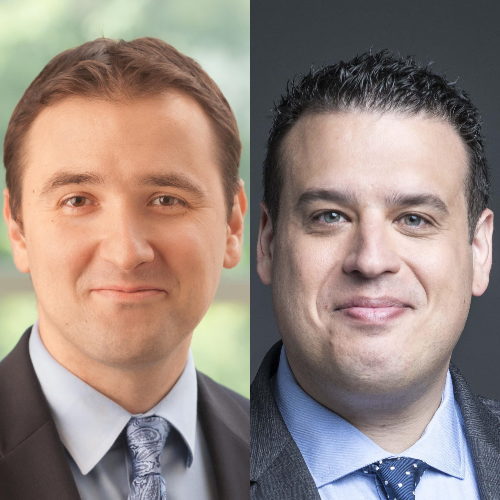
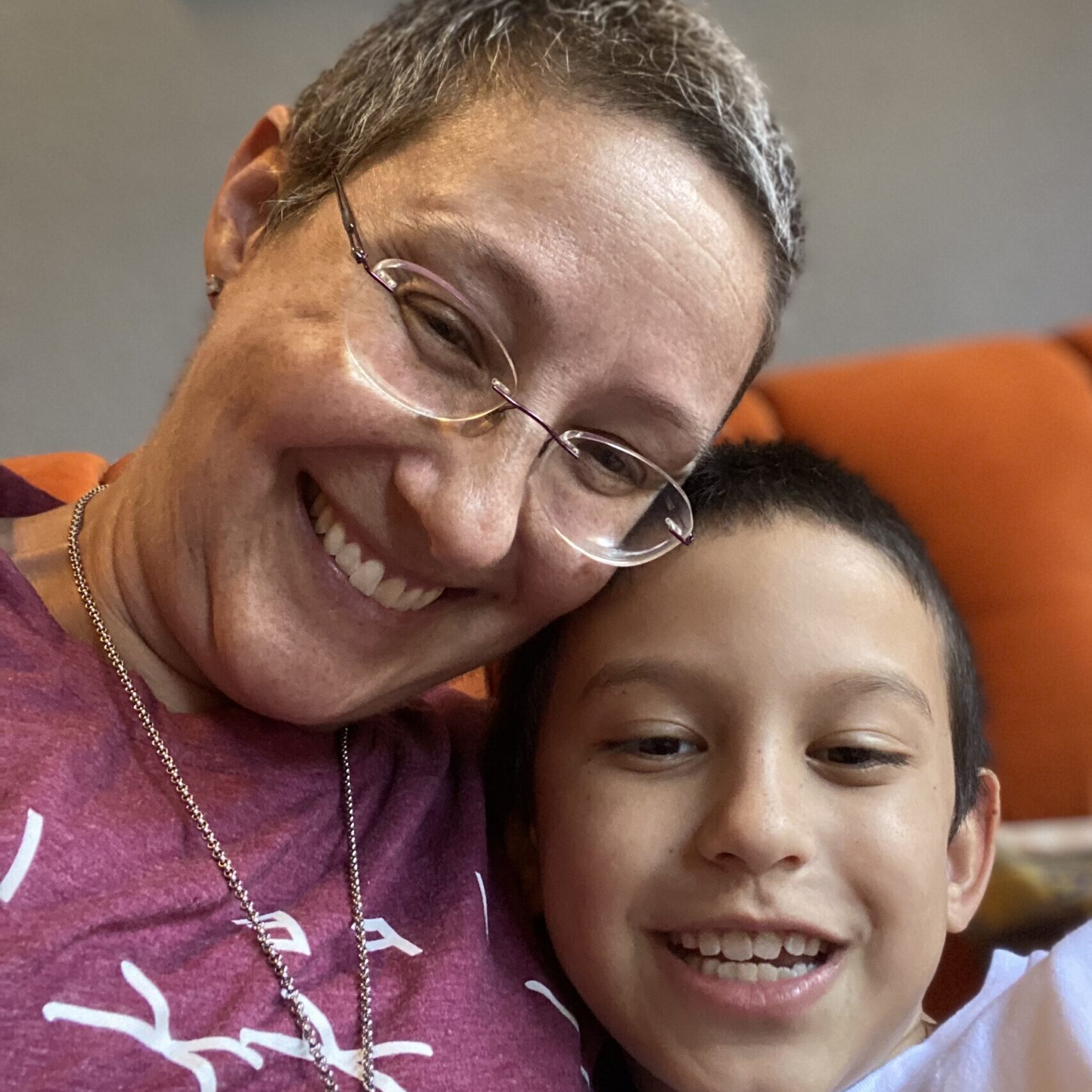

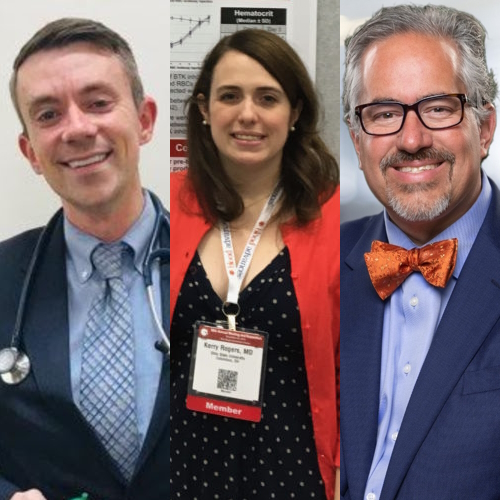
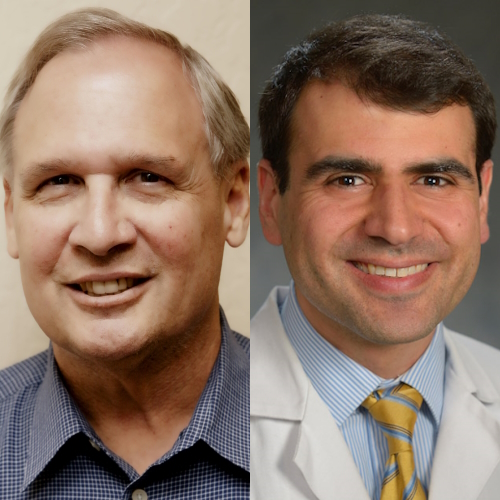
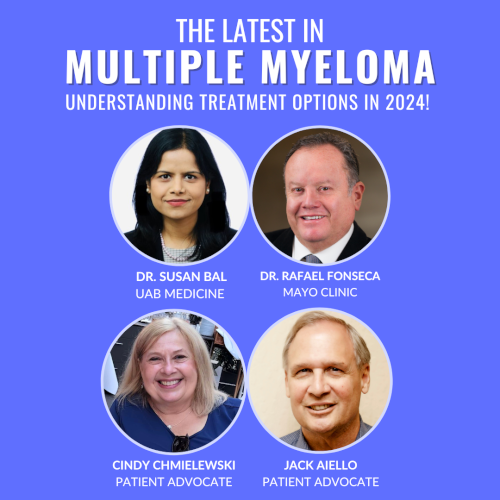
2 replies on “Multiple Myeloma in 2023”
When acronyms are used in both the question and answer as with (RRMM that develop MDS), please spell out what these stand for at least in the question. I have no idea what they are referring to here.
Thank you.
Great feedback,thanks for leaving it! We have updated the page.